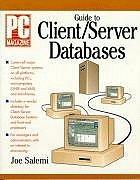Question
//gpio utils below #include gpio-utils.h #include #include #include #include #include /**************************************************************** * gpio_export ****************************************************************/ int gpio_export(unsigned int gpio) { int fd, len; char buf[MAX_BUF]; fd
//gpio utils below
#include "gpio-utils.h" #include
/**************************************************************** * gpio_export ****************************************************************/ int gpio_export(unsigned int gpio) { int fd, len; char buf[MAX_BUF]; fd = open(SYSFS_GPIO_DIR "/export", O_WRONLY); if (fd
/**************************************************************** * gpio_unexport ****************************************************************/ int gpio_unexport(unsigned int gpio) { int fd, len; char buf[MAX_BUF]; fd = open(SYSFS_GPIO_DIR "/unexport", O_WRONLY); if (fd
/**************************************************************** * gpio_set_dir ****************************************************************/ int gpio_set_dir(unsigned int gpio, const char* dir) { int fd, len; char buf[MAX_BUF]; len = snprintf(buf, sizeof(buf), SYSFS_GPIO_DIR "/gpio%d/direction", gpio); fd = open(buf, O_WRONLY); if (fd
write(fd, dir, strlen(dir)+1 );
close(fd); return 0; }
/**************************************************************** * gpio_set_value ****************************************************************/ int gpio_set_value(unsigned int gpio, unsigned int value) { int fd, len; char buf[MAX_BUF]; len = snprintf(buf, sizeof(buf), SYSFS_GPIO_DIR "/gpio%d/value", gpio); fd = open(buf, O_WRONLY); if (fd
/**************************************************************** * gpio_get_value ****************************************************************/ int gpio_get_value(unsigned int gpio, unsigned int *value) { int fd, len; char buf[MAX_BUF]; char ch;
len = snprintf(buf, sizeof(buf), SYSFS_GPIO_DIR "/gpio%d/value", gpio); fd = open(buf, O_RDONLY); if (fd
if (ch != '0') { *value = 1; } else { *value = 0; } close(fd); return 0; }
/**************************************************************** * gpio_set_edge ****************************************************************/
int gpio_set_edge(unsigned int gpio, const char *edge) { int fd, len; char buf[MAX_BUF];
len = snprintf(buf, sizeof(buf), SYSFS_GPIO_DIR "/gpio%d/edge", gpio); fd = open(buf, O_WRONLY); if (fd
/**************************************************************** * gpio_fd_open ****************************************************************/
int gpio_fd_open(unsigned int gpio, unsigned int dir) { int fd, len; char buf[MAX_BUF];
len = snprintf(buf, sizeof(buf), SYSFS_GPIO_DIR "/gpio%d/value", gpio); fd = open(buf, dir | O_NONBLOCK ); if (fd
/**************************************************************** * gpio_fd_close ****************************************************************/
int gpio_fd_close(int fd) { return close(fd); }
//gpio int test below
#include
/**************************************************************** * Constants ****************************************************************/ #define POLL_TIMEOUT (3 * 1000) /* 3 seconds */ #define MAX_BUF 64
/**************************************************************** * Global variables ****************************************************************/ int keepgoing = 1; // Set to 0 when ctrl-c is pressed
/**************************************************************** * signal_handler ****************************************************************/ void signal_handler(int sig); // Callback called when SIGINT is sent to the process (Ctrl-C) void signal_handler(int sig) { printf( "Ctrl-C pressed, cleaning up and exiting.. " ); keepgoing = 0; }
/**************************************************************** * Main ****************************************************************/ int main(int argc, char **argv, char **envp) { struct pollfd fdset[2]; int nfds = 2; int gpio_fd, timeout, rc; char buf[MAX_BUF]; unsigned int gpio; int len;
if (argc "); printf("Waits for a change in the GPIO pin voltage level or input on stdin "); exit(-1); }
// Set the signal callback for Ctrl-C signal(SIGINT, signal_handler);
gpio = atoi(argv[1]);
// gpio_export(gpio); gpio_set_dir(gpio, "in"); gpio_set_edge(gpio, "both"); // Can be rising, falling or both gpio_fd = gpio_fd_open(gpio, O_RDONLY);
timeout = POLL_TIMEOUT; while (keepgoing) { memset((void*)fdset, 0, sizeof(fdset));
fdset[0].fd = STDIN_FILENO; fdset[0].events = POLLIN; fdset[1].fd = gpio_fd; fdset[1].events = POLLPRI;
rc = poll(fdset, nfds, timeout);
if (rc
if (fdset[0].revents & POLLIN) { (void)read(fdset[0].fd, buf, 1); printf(" poll() stdin read 0x%2.2X ", (unsigned int) buf[0]); }
fflush(stdout); }
gpio_fd_close(gpio_fd); return 0; }

Step by Step Solution
There are 3 Steps involved in it
Step: 1

Get Instant Access to Expert-Tailored Solutions
See step-by-step solutions with expert insights and AI powered tools for academic success
Step: 2

Step: 3

Ace Your Homework with AI
Get the answers you need in no time with our AI-driven, step-by-step assistance
Get Started


